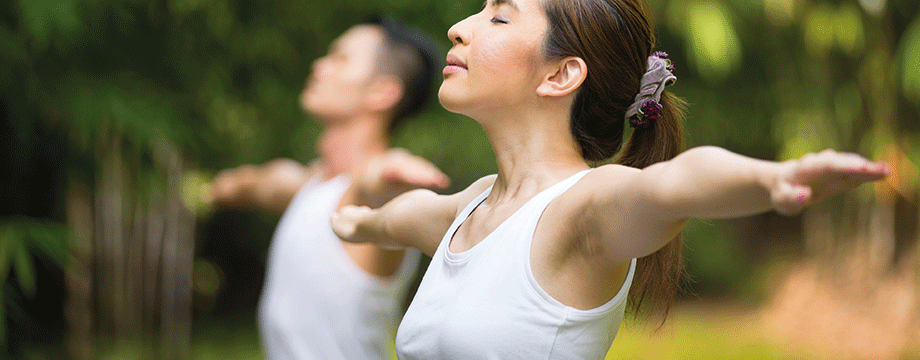The art of Qigong

Katherine Allen provides an introduction to the ancient practice of Qigong
The ancient art of Qigong is perfect for anyone looking to live healthily with a peaceful mind and spirit. Over the last 24 years, I’ve watched hundreds of my students become fitter, calmer, better balanced, and more able to cope with everyday problems, thanks to their Qigong practice. Even small bursts of regular practice can have a phenomenal impact on your health and sense of wellbeing.
Although Qigong covers thousands of different exercises, they all help to encourage a feeling of flow. This helps to calm your nervous system and awaken all the life processes of the body. Qigong can be adapted for every ability and health condition. It is suitable for any age – no one is excluded.
Most people practise Qigong for its therapeutic qualities, and also because it is an enjoyable activity with important health benefits. It helps you to become more relaxed and balanced, making your body stronger and more capable of healing itself. The flexibility of Qigong means that you don’t need to master every move. Instead, regularly practising your favourite exercises can be enough to help your general wellbeing.
The five essential qualities
Qigong is made up of five essential qualities: mindset, breathing, relaxation, posture and connection.
Mindset:
Your attitude in Qigong should be receptive and open. Keep your mind calm, composed and in the present moment.
Breathing:
Breathing should be quiet, smooth, even and free-flowing. Soft, rhythmic, abdominal breathing helps calm the mind.
Relaxation:
Letting go of unnecessary tension, whether in the body or mind, allows you to be more sensitive and improves awareness of everything around you.
Posture:
Correct posture puts you in complete harmony with gravity. It means that everything is in the optimum bio-mechanical alignment to allow efficiency of movement with no unnecessary effort.
Connection:
Try to see your body as an energetic network, where every part is connected. Focusing on this radiating energy will help create a feeling of security, confidence and power.
A Qigong move can be so simple that you learn it in minutes. However, before you start, there are a few things you should bear in mind. Make sure to wear loose, comfortable clothing that won’t restrict your movement. Your shoes should also be flexible – with flat thin soles that let you feel the ground beneath your feet. Most importantly, don’t forget to smile! Taking each exercise too seriously will just tense up your body and mind.
Focusing on the present
As you begin, let your body and mind relax to stop muscle tension and unnecessary thoughts from getting in the way. Next, take a moment to focus on the present moment. This will help develop your ability to move effortlessly and feel the flow of life energy through your body.
One of the great advantages of Qigong is that you don’t need much room to practise it. After you understand a few basics, you can practise anywhere without needing much additional time. Whenever you have a few moments at home – whether you’re waiting for a delivery to arrive or the kettle to boil – strike up a Qigong pose. Even if you’re out and about, there is always an opportunity to practise a simple move. When you’re stuck standing during your morning commute, use the time as a balancing opportunity. A Shoulder-width Stance, Small Horse Stance or Bow Stance will work well in this situation and are subtle enough to not be noticed by your fellow travellers. Once you decide to think creatively, you can work out so many ways to fit Qigong into your daily life.
The Qigong Bible by Katherine Allen features step-by-step instructions for Qigong meditation and different exercises. It is published by Godsfield Press, £14.99, octopusbooks.co.uk
Read previous Your Living articles here...
Read articles from our latest issue here...